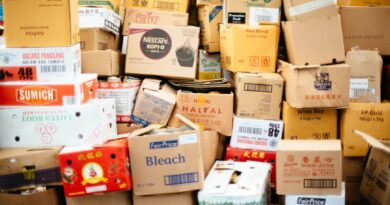Basic Concept of UN Certificate of Hazardous Material
Various pharmaceutical and chemical products, such as aerosol, fall into the UN dangerous good category. The UN hazardous goods regulations provide a structured method of assessing Packaging performance and the performance requirements of a package to carry hazardous goods safely, based on the defined degree of Hazard.
UN certificate
The UN Orange book is the definitive guide to correctly classifying products into one of the nine classes, some with subdivisions. Each class and sub-division has three Packaging groups: I, II, and III.
Group 1 contains the most dangerous goods of any classification and is likely to require that a smaller amount of goods are carried, in addition to having much higher test specifications. The limitations on the mass of products carried either per container or for Load are usually Applied to an aircraft.
All substances to be carried by any means should be rechecked in the UN listing for dangerous substances (available from the department’s transport). There are different limitations and definitions regarding what is hazardous in each transport mode. ICAO, IATA, IMDG, ADR, and RID are the abbreviations for the various bodies representing international air, sea, and European road and rail transport.
| Class | Material | Details |
| 1 | Explosive | No such in pharmaceutical but many chemical lies in this category |
| 2 | Gases | 2.1 Flammable Gases, Spray aerosol |
| 3 | Flammable Liquid | Liquid Alcohol |
| 4 | Flammable Solid | Sodium-related substances and many others |
| 5 | Oxidizing Substance and organic peroxide | Ex. Oxidising Substance |
| 6 | Poisonous and Infectious substances | Ex. Potassium cyanide |
| 7 | Radioactive Materials | Medical isotopes |
| 8 | Corrosive Materials | Ex. Acetic Acid |
| 9 | Miscellaneous Dangerous | Items not covered by the previous eight classes |
ICAO is the legal UN definition of what may or may not be carried. IATA covers the airlines and may not correspond to ICAO, but the classification and Group testing specifications are the same.
Approved methods by approved testing stations must test all Packaging. All possible variations of packaging from all potential suppliers must be tested. PIRA then scrutinizes the results, and the certificate is issued if satisfactory. There are strict rules about the marketing and labeling of you and approved Packaging which must be followed to the letter, or the products which are classified as dangerous may be refused transport of any kind.
Know your UN packaging codes – The complete guide
- Flexible Bags – paper, plastic, textile (all codes – 5M1, 5M2, 5H4 etc)
- Boxes/Combination Packs – of all packaging materials (all codes – 4D, 4G, 4GV, 4H2, 4A etc)
- Drums and Jerricans – steel, fibre, plastic, composite (all codes – 1A1, 1H2, 1G, 3H1, 3H2 etc)
- Intermediate Bulk Containers (IBC’s) – metal, plastic, fibreboard, wood, composite (all codes – 31A, 31H2, 31HA1, 11G etc)
- Flexible Bulk Containers (FIBC’s) (all tests except top lift)
- Large Packagings – metal, plastic, fibreboard, wood, composite, flexible (all codes – 50A, 50H, 50G etc)
- Specialist Packs – for infectious substances and diagnostics (Division 6.2 substances, UN 3373).






